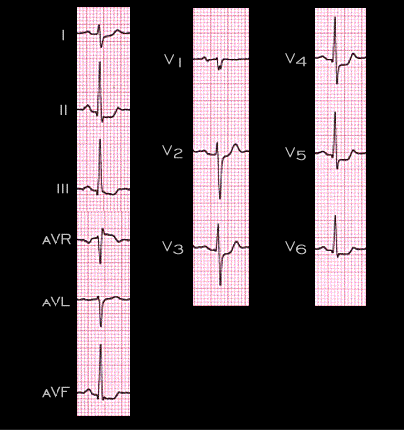
Another example of the inability of ST depression to localize the ischemic zone or the location of the culprit lesion is illustrated in this ECG. It is from from a 72 year old male and was recorded during a treadmill exercise test performed to evaluate the symptoms of chest pain and shortness of breath brought on by exercise and relieved by rest. The resting tracing (not shown) was normal. The ECG performed during exercise (shown here) reveals horizontal depression of the ST segment in leads V3-V5 and in leads II, III and aVF. There is also ST segment elevation in lead aVR. The coronary angiogram from this patient, depicted on the next page, revealed a high grade lesion in the right coronary artery, but only moderate disease in the other coronary arteries.
